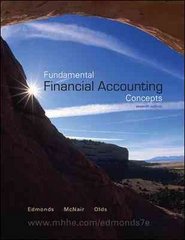Question
In December of Year 2 operations (month 24), Memories, Inc. actually produced and sold 32,675 figurines, consisting of 30,570 dolls and 2,105 replicas. The budgeted
In December of Year 2 operations (month 24), Memories, Inc. actually produced and sold 32,675 figurines, consisting of 30,570 dolls and 2,105 replicas. The budgeted sales price for dolls was $5.00, and $5.25 for replicas. The estimated production and sales during December was 31,678 dolls and 2,595 replicas.
Required:
Compute the price and volume variances for sales, assuming that MI sold all figurines produced for $137,565 (dolls) and $9,051 (replicas). What might explain these variances?
Compute the price and quantity variances for direct materials for each type of figurine. MI paid $29,093 to purchase 32,325 units of raw materials for dolls and $1,453 to purchase 2,401 units of raw materials for replicas. (A unit consists of plastic, molds, varnish, paint, and packaging materials.) From the materials purchased, 30,995 units were used to produce the dolls and 2,149 were used to produce the replicas. How would these variances be interpreted? What might have caused them? Would you consider them large enough to be important?
Compute the labor rate and efficiency variances for each type of figurine. MI paid $71,350 in labor costs for 7,150 direct labor hours for dolls and $6,425 in labor costs for 650 direct labor hours for replicas. How would these variances be interpreted? What might have caused them? Would you consider them large enough to be important?
Assuming MI used a predetermined overhead rate of $2.13 per DLH, compute the variable overhead rate and efficiency variances. MI actually paid $20,852 in total overhead costs, consisting of $17,002 of variable overhead and $3,850 of fixed overhead. How would these variances be interpreted? What might have caused them? Would you consider them large enough to be important?
How might MI extend its variance analysis to be compatible with activity-based costing if they decided to switch to that method?
Required:
A. Compute the price and volume variances for sales, assuming that Memories sold all pizzas produced for $137,565 (meat) and $9,051 (veggie). What might explain these variances?
Answer # A)
Volume Variance of sales:
Actual Budgeted Variance
30,750 Dolls 31,678 Dolls 928 Dolls (U)
2,105 Replicas 2,595 Replicas 490 Replicas (U)
Sales Price Variance:
Actual Budgeted Variance
(30,750*$5) Dolls (31,678*$5) Dolls $4,640 (U)
(2105*5.25) Replicas (2595*$5.25) Replicas $2,572.5 (U)
B. Compute the price and quantity variances for direct materials for each type of pizza, assuming that Memories paid $29,093 for 32,325 units of raw material for Dolls and $1,453 for 2,401 units of raw material for Replicas. (A unit consists of dough shell, sauce, cheese, meat or veggies, and assembly materials.) In addition, 30,995 units were used to produce Dolls, and 2,149 units were used to produce Replicas. How would these variances be interpreted? What might explain these variances? Would you consider them to be large enough to be important?
Answer # B
Direct Material quantity Variance:
Actual Budgeted Variance
30,995 Dolls 32,325 Dolls 1330 units (F)
2149 Replicas 2401 Replicas 252 units (F)
Material Price Variance:
= SP* (SQ AQ)
SP = 29,093/32,325 Dolls = $0.90 per unit
SP = 1453/2401 Replicas = $0.60
Variance (Dolls) = $0.90*(32,325 30,995) = $1197(F)
Variance (Replicas) = $0.60*(2401 2149) = $151.20(F)
These variances are favorable. It indicates that the company has an effective control over its cost and price.
C. Compute the labor rate and effi ciency variances, assuming that Memories paid $71,350 in labor costs for 7,150 hours of labor for Dolls and $6,425 in labor costs for 650 hours of labor for Replicas. How would these variances be interpreted? What might explain them? Would you consider them to be large enough to be important?
Answer # C
AR Dolls = 71,350/7150 = $9.99 per hour
AR Replicas = 6,425/650 = $9.88 per hour
Labour rate variance:
Dolls: AT* (SR-AR) = 7150*(2.51 9.99) = $53,482 (U)
Replicas = 650*(2.78-9.88) = 4615 (U) Above information is needed to answer the question below. The question below this sentance is what I want to check the answer to. Thank you. Memories, Inc. has decided to create a wholly owned subsidiary, Memories Boutique, Inc., (MBI) to sell the figurines directly to the public. In the store dolls will sell for $10.00 each and replicas for $11.50. The intent is for the boutique to buy the figurines directly from Memories, Inc. at the wholesale prices. Assume that MI has excess capacity and can supply the figurines to MBI without impacting their current sales. The manager of MBI has now found an unrelated supplier that will provide dolls for $4.55 and replicas for $5.75. Required: A.Using estimated cost data for Year 3 (given in Part Eight), at what minimum price should MI agree to transfer dolls and replicas to MBI? B.What is the maximum price that MBI should be willing to pay MI for the figurines? C.If MBI purchases figurines from MI, what is the ideal transfer price? Why? D.Should MBI buy figurines from MI or from the outside supplier? (Don't forget that MBI is a wholly owned subsidiary.)
Step by Step Solution
There are 3 Steps involved in it
Step: 1

Get Instant Access to Expert-Tailored Solutions
See step-by-step solutions with expert insights and AI powered tools for academic success
Step: 2

Step: 3

Ace Your Homework with AI
Get the answers you need in no time with our AI-driven, step-by-step assistance
Get Started


